SIMET Fixings
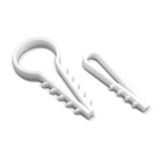
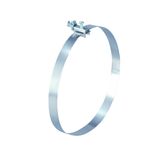
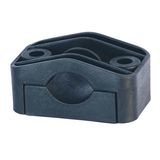


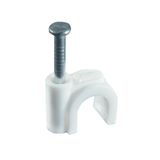
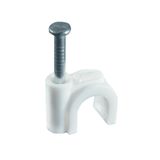


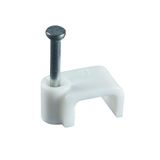
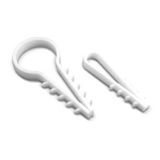
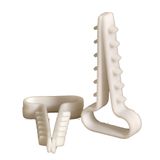
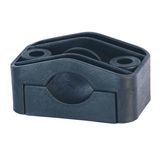

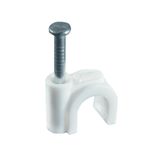
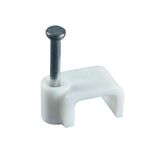
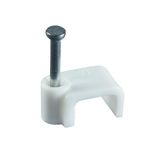
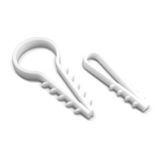


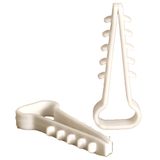




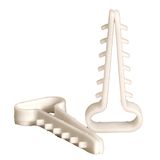

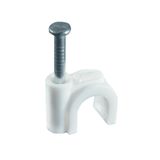
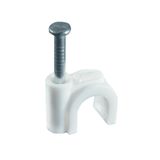

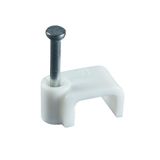
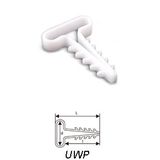
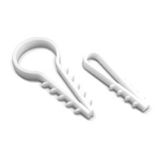
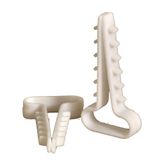
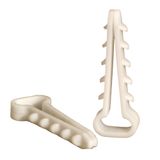
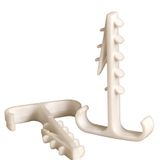
simet fixings Application scope and brand context
Installers need supports that hold shape under heat, vibration, and cleaning, not plastic that creeps after six months. Simet builds around predictable polymers and metals with stated tensile loads, temperature windows, and screw torques, so routing drawings convert into tidy, inspected cableways. Materials include UV-stabilised PA66 (halogen-free), galvanised and stainless steel 304/316, and elastomer cushions that survive oils and glycol. Typical ambient −40…+105 °C; black outdoor grades resist UV and ozone in roof plant and façades.
Product range and series overview
You’ll find single and twin cushioned clamps for power and control, saddle clamps for tray edges, tie-bases with mechanical anchors, heavy U-bolts for risers, and strut/rail adapters that land neatly on DIN 35 or perforated channel. Adhesive options exist for light harnessing; in plant rooms stick to screw or rivet feet—auditors don’t accept foam tape near warm pipes. Kits ship with captive washers and cup springs on higher load classes so installers don’t over-crush sleeves.
simet cable clamps Range and load classes
Round-profile clamps cover Ø6…Ø54 mm in stepped sizes; liners in EPDM or silicone manage vibration and noise. Steel bodies quote static and dynamic loads with safety factors (common working loads 0.3…1.5 kN by size and material). Edge-mount variants bite tray lips without drilling; tooth geometry is matched to 1.5–3.0 mm tray thickness. For EMC-sensitive VFD feeds, 360° braid-contact designs bond shields at the entry point; transfer impedance data is published so you can close the EMC budget.
simet mounting clips Routing, bundles, and UV
Push-rivets, fir-tree studs, and arrowhead clips fit 6–8 mm chassis holes where back-side access is limited. Tie-saddles accept 4.6/7.6/9 mm cable ties with tensile ratings up to 535 N; UV-stable black ties are specified outdoors, natural ties stay inside panels. Low-profile clips keep harnesses clear of door seals; on vibrating skids, double-foot saddles spread load so adhesive pads aren’t doing all the work. Two field notes: standardise three clip sizes across a floor to cut van stock, and order extra liners—most “mystery rattles” are flattened cushions.
Technical specifications and standards
Mechanical parts reference EN 62275 for cable ties and fixings, EN 61386 where conduits interface, and EN 60529 for IP at transitions. Impact per IEC 62262 (IK) is stated on outdoor feet; glow-wire tests to IEC 60695-2-11 are available on polymer series (750–960 °C). Stainless hardware follows ISO 3506; coatings meet ISO 9227 salt-spray classes for corrosive bays. Typical screw hardware M4/M6 with torque windows (e.g., 2.0–2.5 N·m on PA feet, 3.5–5.0 N·m on steel)—publish these on drawings to stop cracked bosses. Fire and smoke options align to HF/LSF site policies.
Applications and compatibility
Cable trays: cushioned clamps every 300–600 mm on horizontals, closer on verticals; keep segregation between power, control, and data. MCC doors: low-head clips prevent foul with door interlocks. Rooftops: stainless feet plus EPDM liners; add drain holes under horizontal runs to avoid water pooling. Food and pharma: smooth-body stainless with silicone inserts for CIP chemicals. When a spec calls up simet fixing accessories, list the cable OD, liner compound, base type, screw size, and substrate—procurement errors drop when those five lines are explicit. For brownfield routes, adhesive backs are a last resort; use rivnuts where steel thickness is unknown.
simet electrical supports Integration and panel practice
Strut adapters let you stack parallel runs—power on the outer row, control on the inner—with 90° cross-overs to minimise EMC coupling. DIN-rail brackets carry small PSUs and interface relays beside harnesses; leave 10–15 mm air each side of convection-cooled units. In enclosures with gland plates, bond metallic feet to the same earth bar that serves the glands; keep PE jumpers short to reduce loop impedance.
Integration with other brand products
Pair fixings with Simet glands and entry frames so seals and strain relief match the wall IP. Use Simet installation boxes at branch points—mount a terminal rail inside and clamp outgoing whips on the same back-plate. With Siemens SENTRON/SIRIUS panels, keep VFD outputs on bonded metallic clamps; SELV and fiber should ride plastic supports to avoid accidental shields. Label routes at interval—QR tags on clamp rows speed FAT and maintenance.
Selection criteria for B2B buyers
- Environment: indoor dry, washdown, or coastal—choose PA vs stainless and the right liner compound.
- Cable geometry: single round, twin, or flat; clamp saddle width should exceed 1.2× cable OD to prevent cold flow.
- Load and vibration: check working load and test curve; add lock-washers or spring cups on reciprocating machines.
- Compatibility: tray thickness, strut size, DIN rail pitch; confirm hole patterns before laser-cutting plates.
- Thermal/chemical: liner material vs oils, glycols, alkalis; silicone for >120 °C zones.
- Documentation: put torque, spacing, and route IDs on the drawing; crews stop guessing, QA stops flagging.
For large tender packs listing simet installation hardware, group SKUs by route segment and tray type—pick/pack becomes predictable and site time drops.
Procurement and logistics notes
Order screws, washers, and earth tags with the clamps—missing fasteners create last-minute substitutions. Don’t mix galvanised feet with stainless bolts outdoors unless you accept galvanic corrosion; keep metals consistent. On multi-building sites, standardise colours: black outside, light grey inside; it simplifies audits. If the schedule mentions simet fastening materials, add spare liners and tie-bases to the first delivery—maintenance teams will use them during commissioning punch-lists.
Advantages of working with Bankoflamps
We align clamp sizes, liner compounds, foot types, substrates, and screw kits to your route drawings and tray schedule, then show live EU stock by warehouse before access windows are booked. Quotes usually land in about an hour with EAN/MPN, working loads, torque tables, and corrosion class called out—so nothing drifts between design and install. Your portal shows lead times, consolidated shipment status, and downloadable price lists with validity dates; approved clients can use post-payment up to 30 days. We consolidate by tray run or cubicle section to cut freight and site sorting, and your account manager checks cable OD ranges, spacing rules, substrate thickness, EMC policy, and earth bonding against your drawings—so crates arrive build-ready and technicians secure once.